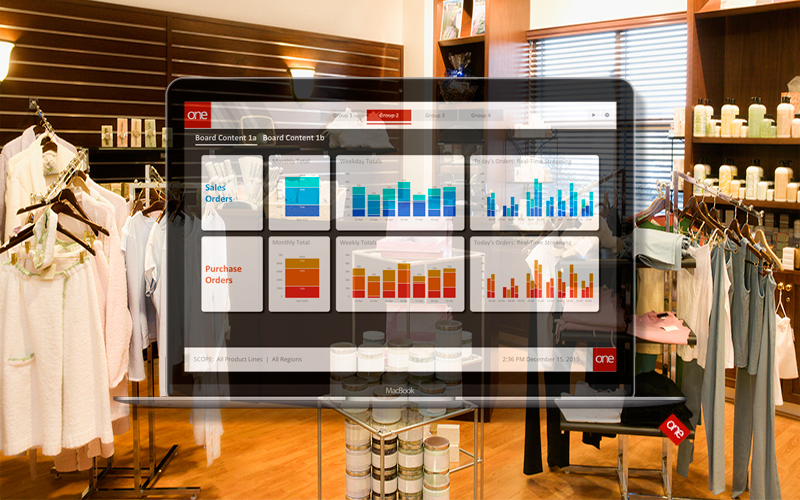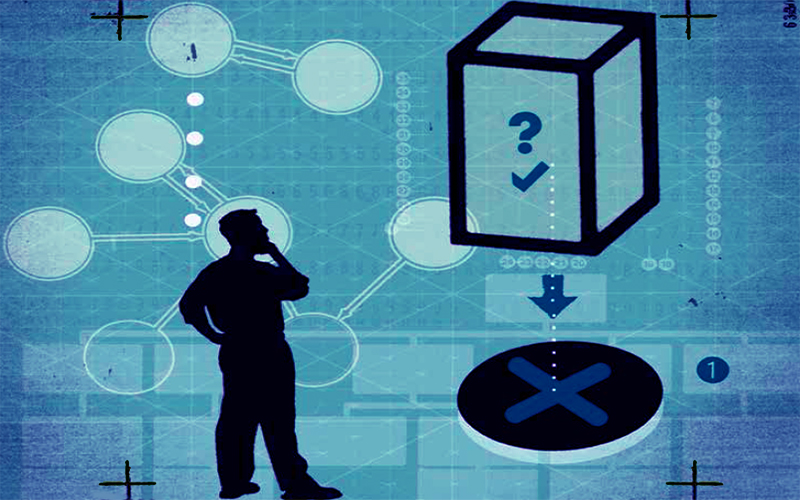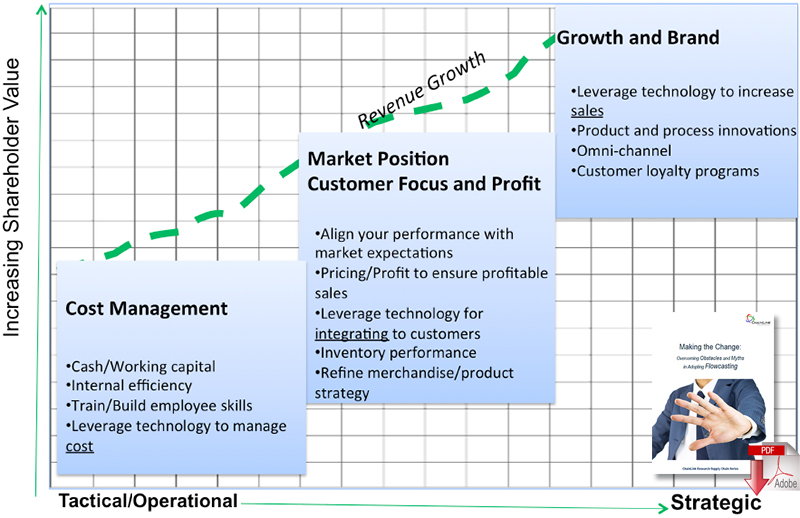Is Flowcasting the Supply Chain Only for the Few?

The perception that Flowcasting, a process to slash inventories, out-of-stocks, and costs across the supply chain, is a manufacturing solution has led many people to conclude that it's really applicable to only a few companies.
Flowcasting has often been referred to as ‘the Holy Grail’ of demand driven supply chain planning (and rightly so).
Driving the entire supply chain across multiple enterprises from sales at the store shelf right back to the factory.
So is Flowcasting a retail solution or a manufacturing solution? Many analysts, consultants and solution providers have been positioning Flowcasting as a solution for manufacturers.
They’re wrong.
While it’s true that some manufacturers have achieved success in using data from retailers to help improve and stabilize their production schedule, the simple fact is that manufacturers can’t achieve huge benefits from Flowcasting until they are planning a critical mass of retail stores and DCs where their products are sold and distributed.
For a large consumer packaged goods manufacturer, this means collecting data and planning demand and supply across tens of thousands of stores across multiple retail organizations, all of which have their own ways of managing their internal processes.
At the end of the day, a manufacturer initiated Flowcasting implementation results in what amounts to a decision support/reporting system that isn’t directly integrated to the actual product movements that will occur from the factory to the store shelf.
Flowcasting is a retail solution that will greatly benefit manufacturers over time as more and more of their retailer customers adopt the concept.
Flowcasting is not a data collection and calculation exercise. It’s a planning philosophy that requires the folks on the front end of the supply chain (retailers) to change most of their business practices to be forward looking, such as:
- Assortment planning and line review (including planogram resets)
- Seasonal planning
- Promotions planning
- Network realignments (including store-to-DC network mappings and changes of source)
The retailer holds complete control over all of the above decisions. To the extent that they can change their processes to plan these activities in advance (and share those plans with manufacturers in a language they can understand), everyone in the supply chain benefits.
To the extent that folks on the back end of the supply chain (manufacturers) attempt to ‘work around’ retailer customers who are not thinking or operating in a time-phased manner, we are still left with a disconnected supply chain (perhaps with fancier tools).
You can’t push a rope, as they say.
The perception that Flowcasting is a manufacturing solution has led many people to conclude that Flowcasting is really applicable to only a few companies. If that perception were true, then the conclusion would be correct – but it’s not.
When we conceived of Flowcasting, we were really outlining the concept of totally integrating a retail supply chain – from point of consumption (consumers) to point of origin (the manufacturer’s manufacturers). I believe it’s why we called the book “Flowcasting the Retail Supply Chain”.
Now, the last time I checked there were more than only a few retailers.
Does Flowcasting apply to virtually every retailer? I believe it does. After all, don’t they sell products to consumers using physical stores, virtual stores, or a combination of both and supply those products via a network of distribution points? Couldn’t that be Flowcasted? Shouldn’t it be?
Our retail client in Winnipeg Canada is managing their entire business driven by a forecast of consumer demand, by item, by store (including web store), and translating those forecasts into the demand, supply, capacity and financial requirements for a 52 week planning horizon – including sharing purchase projections with their suppliers.
They have implemented and are doing what’s outlined in our book. They are Flowcasting.
Another misconception about Flowcasting is that all of the data must be in one place and being used by planners from both the retailer and manufacturer organizations. While this is an admirable (and likely achievable) goal, the Flowcasting planning process can be (and has been) achieved without it.
Flowcasting is about seamlessly integrating the entire retail supply chain from one forecast and working a common plan and a single set of numbers. Can and should a retailer manage their business this way? Without question and our retail client has proven it.
The point is that separate companies can be using the same numbers and executing the same plan without logging into the same system. We need to collectively get a grip on this and learn to determine the difference between what’s cake and what’s icing (and in this particular case, a few sprinkles on top of the icing).
To extend the thinking of Flowcasting even further, consider Flowcasting as a concept and a philosophy. A philosophy to drive the entire, integrated supply chain from a forecast at the point of consumption.
A couple of years ago, I had the pleasure to visit One Network Enterprises at their Dallas headquarters to talk about supply chain planning. Inevitably we got talking about Flowcasting.
During the conversations, Aaron Pittman and Richard Dean proclaimed to me that Flowcasting, as a concept, had widespread application (watch video above). They insisted that the concept of driving a supply chain from point of consumption to point of origin applied to any industrial supply chain.
If you think about it, they are right.
Had we spoken to them before we wrote the book, undoubtedly we would have more aptly named it “Flowcasting the Supply Chain”.
So if you think the concept of Flowcasting applies to only a few companies…you’re right… Flowcasting does apply to only a few…
Only a few thousand!
Related: The Perfect Formula for Determining the Right Amount of Inventory

Article Topics
One Network Enterprises News & Resources
Blue Yonder announces an agreement to acquire One Network Enterprises for $839 million Blue Yonder Acquires One Network Enterprises for $839M Companies Need to Develop New Innovative Approaches to Supply Chain Design How to Improve Cost of Goods Sold Horizontally Across the Supply Chain How the Global Pandemic Accelerated Supply Chain Visibility, Digitalization, and Automation AI and Data, the Future of Supply Chain Management AI and Supply Chain Problem Solving More One Network EnterprisesLatest in Supply Chain
Top-Paying Jobs in Supply Chain for 2024 Revealed Record High in Container Production Expected for 2024 IBM Investing $730 million to Expand Semiconductor Plant in Canada VIDEO: Baltimore’s Francis Scott Key Bridge Demolished in Controlled Explosion Nike Signs 20-Year Lease on New UK Supply Chain Hub Indiana Tests Futuristic Highway that Can Charge EVs While Driving The Impact of Amazon Business Prime on Procurement Efficiency More Supply Chain














